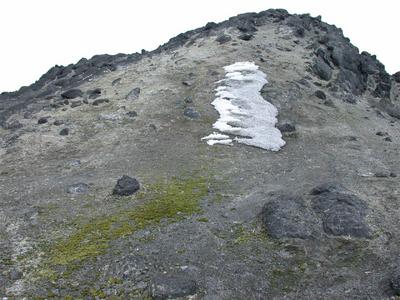7 January, 2003

Check out this map! Scott Craig, our computer guru and GPS expert has made a map for you showing the whole Taylor Valley. Look carefully at this map and find where we collected each of our samples from the three transects. The GPS was a great help to us because we want to know specifically where each sample came from and, as you know, we have lots of samples. See if you can locate on the map the places described in the former journal entries with pictures. For example, where is blood falls? And where is that river we found when we thought we had clear access to the slopes for hiking? -- Barbara Schulz Acting Associate Director, HutchLab 1100 Fairview Ave. N. DE-390 PO Box 19024 Seattle, WA 98109-1024 Ph: 206-667-4614 bschulz@fhcrc.org

Sampling at Cape Royds As we think more about where we might find some Antarctic yeast in the soils we begin to wonder if there ware yeast colonies in the soils at Cape Royds where there is a penguin colony. After talking about it for a bit, we decide to see if there might be an opportunity to do a day trip to get a few samples just to see if any yeast is growing there. While this site is not part of our Taylor Valley plan, we do want to find any yeast colonies that may be living here. After some discussion and seeking permission, we are off to collect some soil at Cape Royds. Do you think we will find any yeast in the soil there? What are the chances that there will be some? Why?

Guess what we found at Cape Royds? Yup! Penguins. Does this increase our chances of finding yeast? Hey, look again at that last picture. What is all that greenish stuff? Didn't I say that there were no plants growing here? What do you think it is?

Scott has been busy again. Here is another map including all the sites from which we have soil samples and are checking for yeast populations. Notice that there is a dot on top of Mt Erebus! Our colleagues ( scientists across the lab from us) are doing their research on volcanic activity. We all eagerly describe our science to each other. This is frequently called networking. Our new scientist friends offered to bring a small soil sample down from the mountain with their next scheduled trip for us. If we find promising results, we may seek permission to do further studies with this soil as well. Can you think of any other places where we might collect soil and look for yeast? A really fun part of science is all the wonderful people we meet and all of the learning that happens. We all learn a lot about each pothers research.

The research team looks more closely at the red material in the ice at the end of the Taylor Glacier. We want to take a soil sample here, but have been distracted by this curious looking red ice and compacted snow. We will take a sample of this material as well as the soil
Contact the TEA in the field at
.
If you cannot connect through your browser, copy the
TEA's e-mail address in the "To:" line of
your favorite e-mail package.
|
